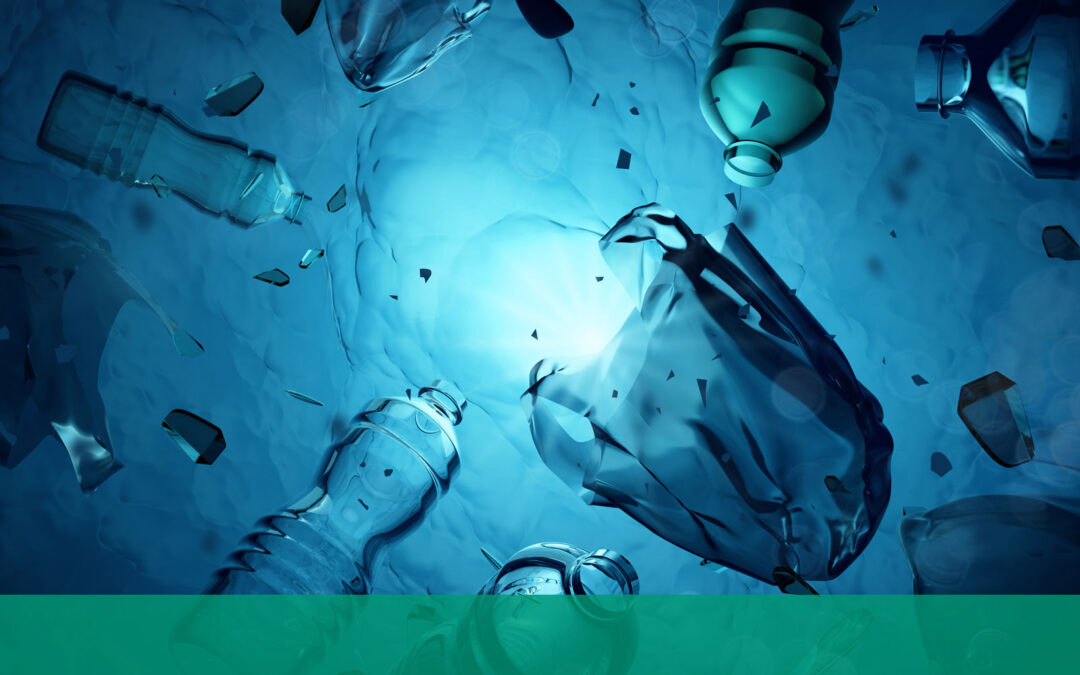When I heard of the Great Pacific Garbage Patch being twice the size of Texas, images of floating trash bags, colorful plastic containers bobbing up and down, and debris as far as the eye could see came to mind. But although my imagination can be quite vivid, it is not always accurate, or reality. The Great Pacific Garbage Patch does exist, but if you were to simply look over the ocean at the horizon, you might miss it. Ocean currents do bring garbage together, but instead of just one, there are actually several concentrated oceanic garbage patches.
We hear of dolphins, turtles, and even whales that get strangled by ropes, and dead sea birds whose stomachs are full of indigestible pieces of colorful plastic and bottle caps. However, what is even more nefarious, is what is not as readily visible. These garbage patches are full of microplastics that are dumped into the ocean from commercial processing—tiny residues that may come from man-made products and irresponsible waste disposal. They also occur as the plastic is subjected to the sun’s radiation and elements. After some time, the floating plastic breaks down into smaller particles, and plankton view them as algae and consume them. Then, tragically, not only are the plankton affected, but they become part of a contamination chain as they are eaten by larger fish. In addition, the plankton break down the microplastic into even smaller nanoplastic particles that are undifferentiated from the ocean itself.
Nanoparticles of plastic are considered more reactive and dangerous than the floating ropes and plastic bags we find around seal necks. They become an invisible ingredient of the sea, creating a broth in which marine life swim and become contaminated. While you may be avoiding BPA in the products you purchase, you may be eating fish that have high concentrations. Sadly, marine life doesn’t have the option of avoiding microplastics with their toxic substances, since they are found in varying concentrations in the oceans around the world.
The mass production of plastics started in the 1950s, and since then, we have reportedly dumped 6.3 billion tons of it into our environment. The problem with this is that plastic is not biodegradable. It doesn’t break down into benign substances that can restore soil or provide nutrients to living matter. While I am concerned about the effect it is having on sea life in the middle of the Pacific Ocean hundreds of miles away from me, I am much more concerned about the microplastics in your water bottle, or the cup of coffee you are swallowing daily.
Plastic contains toxic chemicals with names such as PFAS, BPA, and phthalates. A plastic that advertises itself as BPA-free does not mean that it is benign. Research has found multiple offending agents in various types of plastic, and has linked these chemicals to cancer, birth defects, liver disease, thyroid disease, low sperm counts, kidney disease, decreased immunity, etc. And because we can’t see them, we are sucking up microplastics, too.
For now, let’s focus on beverage containers: water bottles, baby bottles, juice or soda bottles, and coffee or tea cups. Researchers at the National Institute of Standards and Technology (NIST) looked at single use hot beverage cups. After pouring pure, uncontaminated hot water into a typical to-go coffee cup and letting it cool to a drinkable temperature, they sprayed some of the liquid onto a glass surface. After it was dry, they used techniques such as electron microscopy to view the glass and found that “when plastic products are exposed to hot water, they release trillions of nanoparticles per liter into the water.”1
Though not hot, water in plastic bottles also becomes contaminated. One study found that chemicals from the plastic bottle enter the water in as little as one week.2 Other studies that assessed various brands and types of bottled water found 93–100 percent of them were contaminated with micro/nano plastics.3 Depending on the amount of time, and what temperatures the bottled water has been exposed to, varying degrees of contamination can occur. Upon investigation, one research project found microplastic in “83 percent of tap water samples from major cities around the world and in 93 percent of samples from the world’s top 11 bottled water brands.”4
Next month, we will address how these microplastics affect our health; but for now, I would like to suggest a New Year’s challenge. Let’s look for ways to reduce our exposure to microplastics, and let’s start with the containers we drink from. Consider purchasing a portable water purifier instead of relying on water bottles, and pouring hot water into a cup that will not leach its lining into our drink.
- National Institute of Standards and Technology. NIST Study Shows Everyday Plastic Products Release Trillions of Microscopic Particles into Water, April 20, 2022.
- Center for Environmental Health. New Study Shows PFAS Chemicals Rapidly Migrate into Products from Fluorinated Plastic Containers, March 7, 2023.
- National Library of Medicine. Microscopic Contamination of Drinking Water, July 31, 2020.
- Fredonia State University of New York. Professor’s Research into Bottled Water Achieves Worldwide Audience, March 15, 2018.


